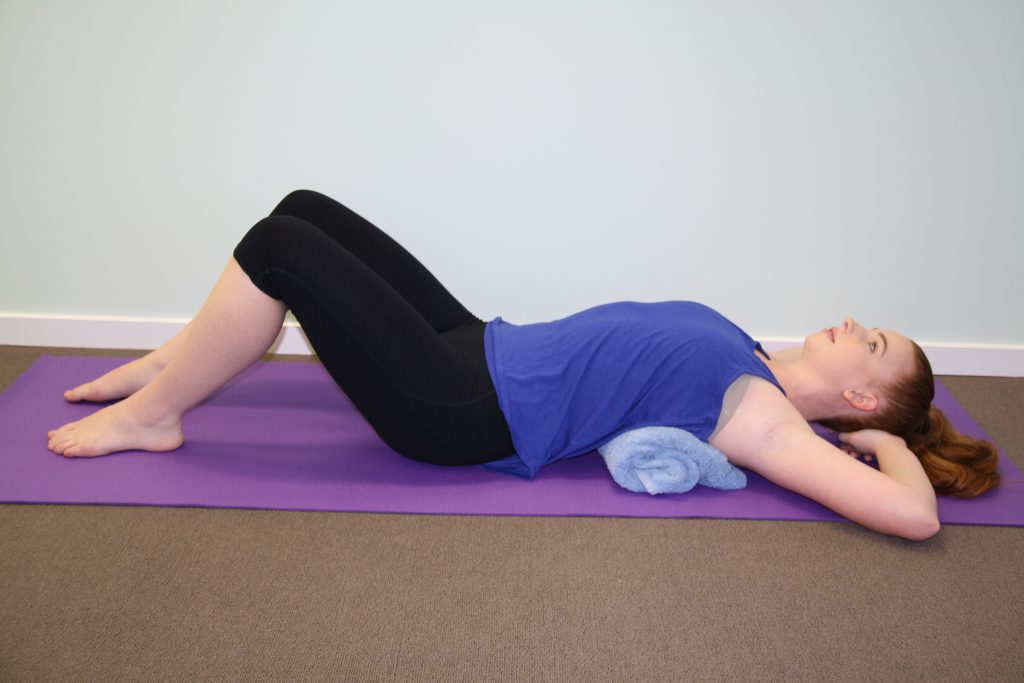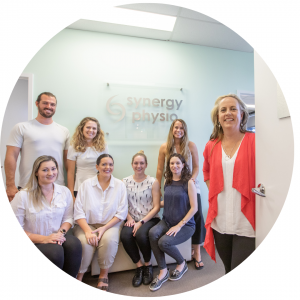- Are you suffering from neck pain or headaches when staring at a screen for too long?
- Are you experiencing neck, arm or shoulder pain when using a mouse?
Then you might be experiencing tech neck – its a real, well…. pain in the neck.
- Did you know your workstation and computer setup are really important factors in preventing the onset of pain?
- Do you know how to set up your workstation to minimise the load on your neck , shoulders and nervous system?
- Simple changes can make a big difference in an eight-hour working day!
Here are Synergy Physio’s top 5 tips to improve your workstation setup and prevent the onset of tech neck:
- Ensure your keyboard and mouse are close to your body. When you are at your desk, tuck your chair all the way in and have your elbows roughly at 90 degrees. Your keyboard and mouse should be somewhere within easy reach. Stretching further out to the mouse or keyboard contributes to a slumped posture and also adds load to the neck and shoulders causing tech neck. Here is a quick video to show you how!
- Screen height. Ensure the top of your computer screen is roughly in line with the level of your eyes. Unfortunately this means that using a laptop for a long period of time can be problematic. The reason being, if you set your keyboard up at the right height with your elbows at 90 degrees, the screen of a laptop is too low for your neck and your eyes. (And if you elevate your screen height then the keyboard is too high for your arms!). If you are working for long periods of time on a laptop it’s recommended that you get a detachable or external keyboard. That way you can place your laptop on a phonebook or at an elevated height with the top of the screen level with your eyes. You can then also have your keyboard positioned appropriately for your arms.
- Sort out your seat. Ensure that your seat is the right height so that when your hands are on the keyboard that your elbows are at 90 degrees. This may mean that you need to raise or lower your chair depending on how tall you are. If you need to raise your chair and your feet are then off the floor, you will then need a footstool. If you have a chair that has arms on it, you need to ditch this! Chairs with arms will prevent you from tucking your chair in and getting close enough to the desktop. So ensure that your chair can slide under the desk, so your body is positioned as close as possible to your keyboard. Chairs with a seat that can tilt downward slightly (so your knees are lower than your hips) are preferable. Not only is your seat height and tilt important, so it the way you sit! Watch this video for simple tips to get your sitting posture right.
- Try a Varidesk. Sitting for long periods of time can be a sustained load on the lumbar spine, as well as the neck and shoulders and it is recommended that you move regularly. A varidesk or height adjustable sit-stand desk does give you the option to work in a standing position for periods of time, which can reduce the load on the neck and shoulders and prevent the onset of symptoms.
- Stretch. Would you like to have simple stretch routine that helps your improve your posture and prevent the onset of neck and shoulder pain at your work station? See this video here for an easy 30 second routine without leaving your workstation! Or try this stretch below.

If you are having ongoing neck, shoulder or arms symptoms as a result of using a computer, it is important to have an accurate assessment and professional diagnosis of your symptoms in order to provide treatment and a plan to move forward with your health.

If you would like to ask questions about your work station or have an expert assess your spine or shoulder, then contact us on 07 5448 3369, or simply book an appointment online!
Like to know more about Synergy Physio? Our friendly and professional team have expertise in the management of spine, pelvic and hip pain. See our website for information! We look forward to helping you recover from pain or injury.


Leave A Comment